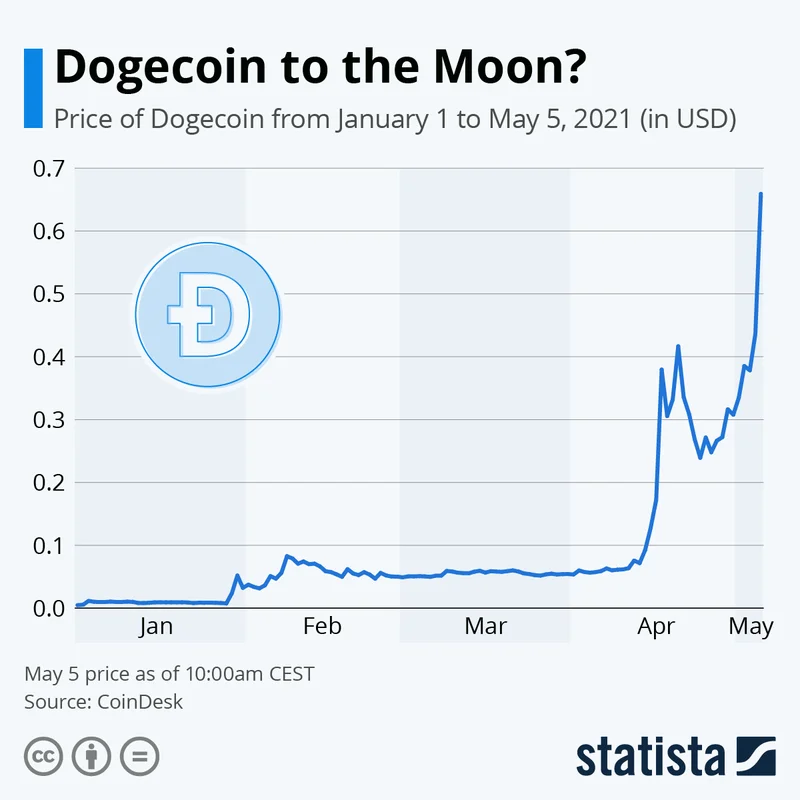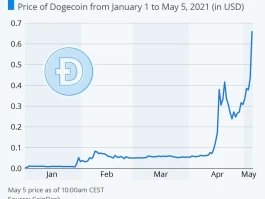Deconstructing the Dogecoin Mirage: A Look Past the $6.90 Hype
There are two conversations happening about Dogecoin right now, and they bear almost no resemblance to each other. In one, analysts and AI models are locked in a forecasting arms race, throwing out price targets like $1.50, $3.00, and even a staggering $6.90. In the other, the asset is bleeding value, suffering violent flash crashes, and struggling to hold basic technical support levels.
The discrepancy is jarring. We’re witnessing a battle between two fundamentally different valuation models. One is a narrative of pure momentum, a belief that history will not just rhyme but repeat itself verbatim. The other is a quieter, more sober assessment of underlying utility in a crypto market that is, however slowly, beginning to mature. The data on the screen tells a story of weakness, yet the predictions speak of a coming tidal wave. My job isn't to pick a side; it's to dissect the logic of both.
The Anatomy of a Hyper-Bullish Forecast
Let’s start with the most audacious claim, one that has led to headlines like Dogecoin Price: ‘$6.9 Is A Magnet’, Analyst Predicts. The analyst Kaleo bases this on a fascinating, if highly speculative, piece of ratio analysis. The logic flows like this: if Bitcoin reaches his projected price of over $500,000 (implying a $10 trillion market capitalization), then Dogecoin could recapture 10% of that valuation, as it did during the peak mania of 2021. This would give DOGE a $1 trillion market cap, which, based on the circulating supply, translates to a price of about $6.94.
This is a clean, simple mathematical exercise. It's also built on a tower of cascading assumptions. It requires Bitcoin to execute a nearly 5x move from its current all-time high. Then, it requires the capital flows from that event to distribute into altcoins in the exact same proportion as they did three years ago. Finally, it assumes Dogecoin will be the primary beneficiary of the "meme coin" allocation in this new cycle.
This is less of a forecast and more of a historical reenactment. It’s like trying to predict the outcome of the next Super Bowl by re-watching the 1985 game and assuming every play will run in the same sequence. The market environment, the regulatory landscape, and the competitive field have all changed dramatically. China’s DeepSeek AI offers a more tempered, though still wildly optimistic, target of $1.50 to $3.00, citing community strength and adoption by platforms like Tesla and PayPal. But even this projection requires a 6x to 12x move from its recent price of around $0.25—or to be more exact, its recent trading range fluctuating between $0.14 and $0.29.

And this is the part of the analysis I find genuinely puzzling. These forward-looking statements seem to exist in a vacuum, completely detached from the asset's present performance. While these predictions were being made, Dogecoin was experiencing a brutal market-wide correction, plunging below the key $0.25 support level and even flash-crashing by 50% in some instances. The charts from Cointelegraph show DOGE struggling to hold its 50-day simple moving average ($0.24). A break below its current uptrend line would invalidate the entire bullish setup technical analysts are watching. The observable data points to consolidation at best, and a breakdown at worst. So, what external catalyst, beyond a simple Bitcoin rally, could possibly justify a $1 trillion valuation for a network with limited developmental activity? And at what point does market saturation for meme-based assets become a factor?
The Quiet Insurgency of Utility
While the Dogecoin narrative focuses on recapturing past glory, a different class of asset is being built on a forward-looking thesis. Some analysts go so far as to make the Prediction: 3 Cryptocurrencies That'll Be Worth More Than Dogecoin 5 Years From Now, pointing to projects like Chainlink (LINK), Avalanche (AVAX), and Polkadot (DOT) as likely candidates to surpass Dogecoin’s market cap. The argument isn't about memes or celebrity endorsements; it's about function.
The core premise is that as the crypto market matures—driven by institutional adoption, ETFs, and the buildout of Web3—value will accrue to the protocols that provide essential services. Chainlink is the dominant oracle network, feeding real-world data to smart contracts (a critical piece of infrastructure). Polkadot is designed for interoperability, allowing different blockchains to communicate. Avalanche offers a high-speed, eco-friendly alternative to Ethereum for decentralized applications.
These projects aren't competing for the title of "internet's favorite dog picture." They are competing to become the foundational rails of a decentralized internet. Their value proposition is tied to network usage, developer adoption, and the number of projects building on their platforms. Dogecoin, by contrast, was created as a joke—a clone of a clone of Bitcoin with intentionally weakened code. Its primary use case remains what it has always been: a highly liquid vehicle for speculation and a simple payment system, which several other networks now do more efficiently.
This isn't a moral judgment; it's an assessment of durable value. A passionate community and first-mover advantage as a meme coin are powerful forces (and have given DOGE a market cap comparable to S&P 500 companies like Delta Air Lines). But history is littered with companies that had strong brands but failed to adapt to technological shifts. The question for Dogecoin over the next five years is whether its cultural relevance can outweigh its technical and functional stagnation in an industry defined by relentless innovation.
A Tale of Two Models
Ultimately, the analysis of Dogecoin presents a choice between two models. The first is a momentum model, betting that the psychological mania of 2021 can be perfectly replicated. It views price as a function of social media sentiment and Bitcoin's coattails. The $6.90 price target is the logical endpoint of this view—it’s not an investment thesis, it’s a bet on a cultural echo. The second is a utility model, which posits that long-term value in a maturing market will flow to protocols that solve real problems. In this model, Dogecoin's position is far more precarious. While a market-wide bull run could certainly lift all boats, the probability of Dogecoin outperforming functional, infrastructure-level protocols over a five-year horizon seems statistically low. The numbers on the chart right now suggest the market is leaning toward the second model, even if the headlines are still captivated by the first.

